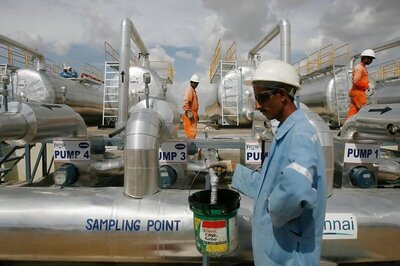
views
A book on the history of Sree Padmanabha Swamy temple is quite in context with the mysteries behind the treasures at the temple remaining unanswered. To make it more appealing to the readers who have grown an appetite for the treasure tales, historian Malayinkeezhu Gopalakrishnan begins his recently-released book, ‘The Sree Padmanabha Swamy Temple’, with the strange happenings of June 2011. The book then moves on to the past, the days of commands and swords. The book talks about the hearsay stories about the secret chambers within the temple. “There is a widespread belief that no one dared to open the vaults as there were snakes to safeguard the immense wealth stored in them. There is a also a tale that when a king tried to open the chambers, the sea roared saying that it is to be opened only when poverty strikes the kingdom,” says Gopalakrishnan. These stories did not stop the team set by the Supreme Court from searching the treasure chest at the temple on July 2011. “The specifications of the assets found within the chambers were brought to light by the team and it set off speculations regarding the source of the wealth. From the Mathilakam documents, it can be understood that there is some truth about the sources of rare antiques and priceless treasures in the temple. Most of them were offerings made by devotees and also included penalties paid by devotees,” he adds. The author points out two reasons to argue that the wealth in the temple was not grabbed from the poor. “Firstly, the poor could not have afforded to give such heavy gold ornaments as penalty and secondly the money received as penalties was generally used for the development of Travancore,” he says.The book says that the temple is what it is now because of the interest the rulers of Travancore had been taking in its welfare for centuries. In the tenth century the temple was under the authority of the Venad Raja, which was later taken up by Marthanda Varma. The 16th century saw the devastating destruction of the temple by fire and it was reconstructed in the 17th century. The construction of the sixth and seventh tier of the gopuram was completed by Karthika Thirunal Rama Varma in the 18th century and in 1934 the temple caught fire for the second time.Soon after, the temple was visited by Swami Vivekananda. After learning about the untouchability practices which existed then, he had made the statement that ‘Kerala is a lunatic asylum’. Wanting to discuss about eradicating the evil practice of caste system, he went to the Krishavilasam palace to meet the then ruler Sree Moolam Thirunal. But unfortunately, the meeting didn’t happen as the Raja was engrossed in his administrative work, says the author. And in 1937, to celebrate the ‘Temple Entry Proclamation’ Mahatma Gandhi had visited the temple.It took Gopalakrishnan six months to complete the work. Apart from chronicling the history of the temple, it is dotted with tales and significant incidents and is written in an appealing manner. It has been published by Sura Books and is priced at Rs 120.




















Comments
0 comment